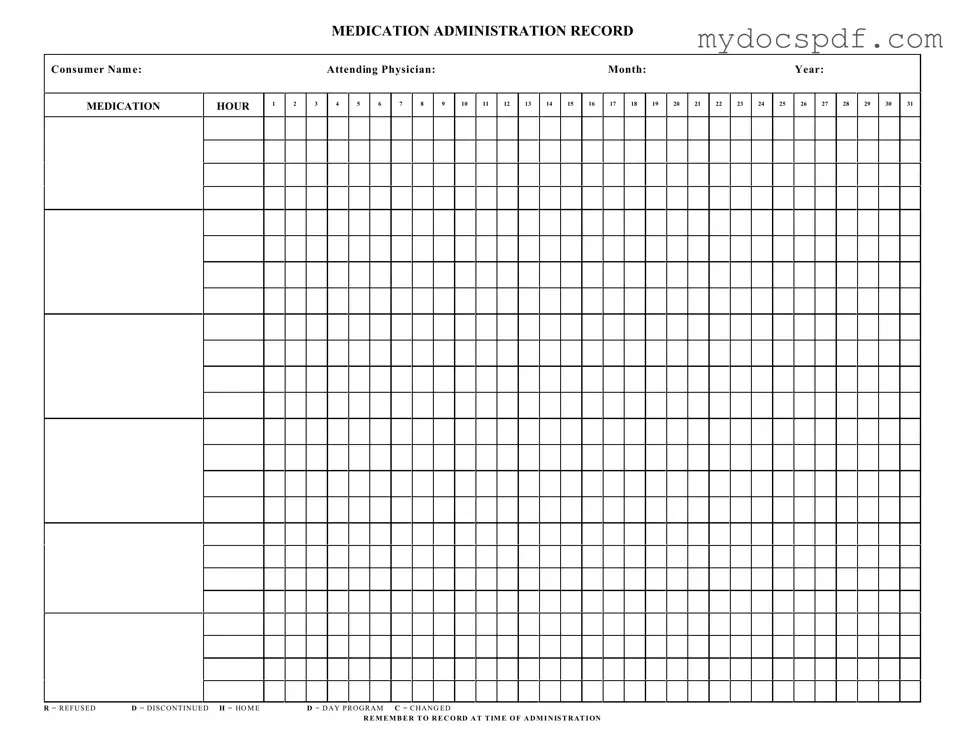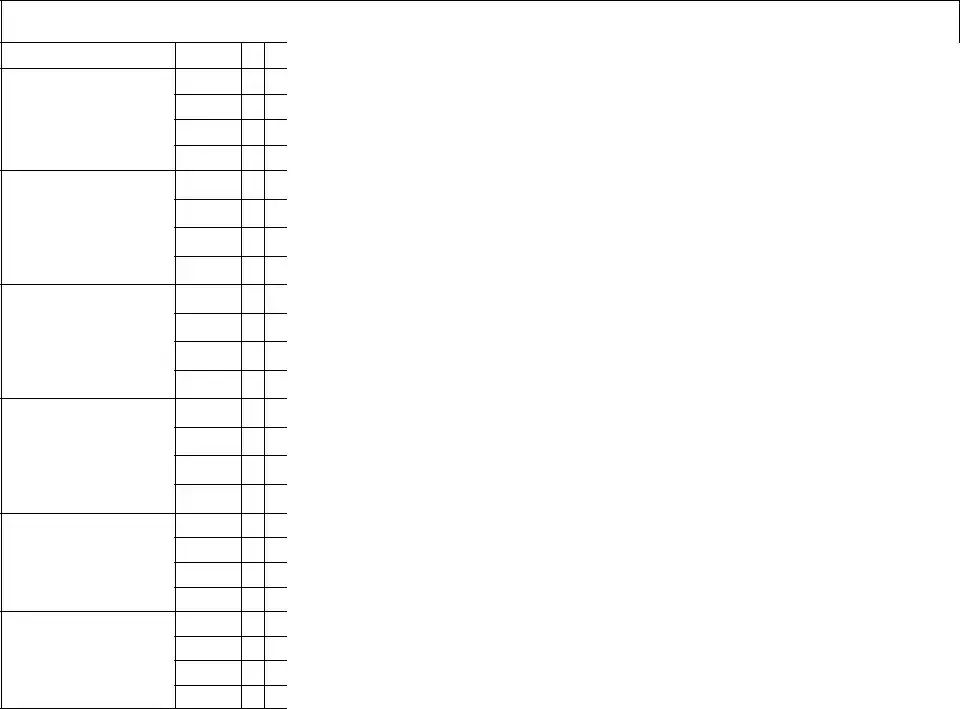The Medication Administration Record Sheet (MARS) serves as a vital tool in the healthcare system, ensuring that patients receive their prescribed medications accurately and on time. This form is designed to track the administration of medications over a specific period, typically organized by days and hours, allowing healthcare providers to monitor compliance and effectiveness. Each record includes essential details such as the consumer's name, the attending physician, and the specific month and year of administration. The layout features a grid where medications can be logged by hour, along with designated symbols to indicate whether a dose was refused, discontinued, or changed. This systematic approach not only aids in maintaining a clear history of medication administration but also emphasizes the importance of timely record-keeping, which is crucial for patient safety and effective treatment. By ensuring that all relevant information is captured at the time of administration, the MARS form contributes significantly to the overall quality of care delivered to patients.

